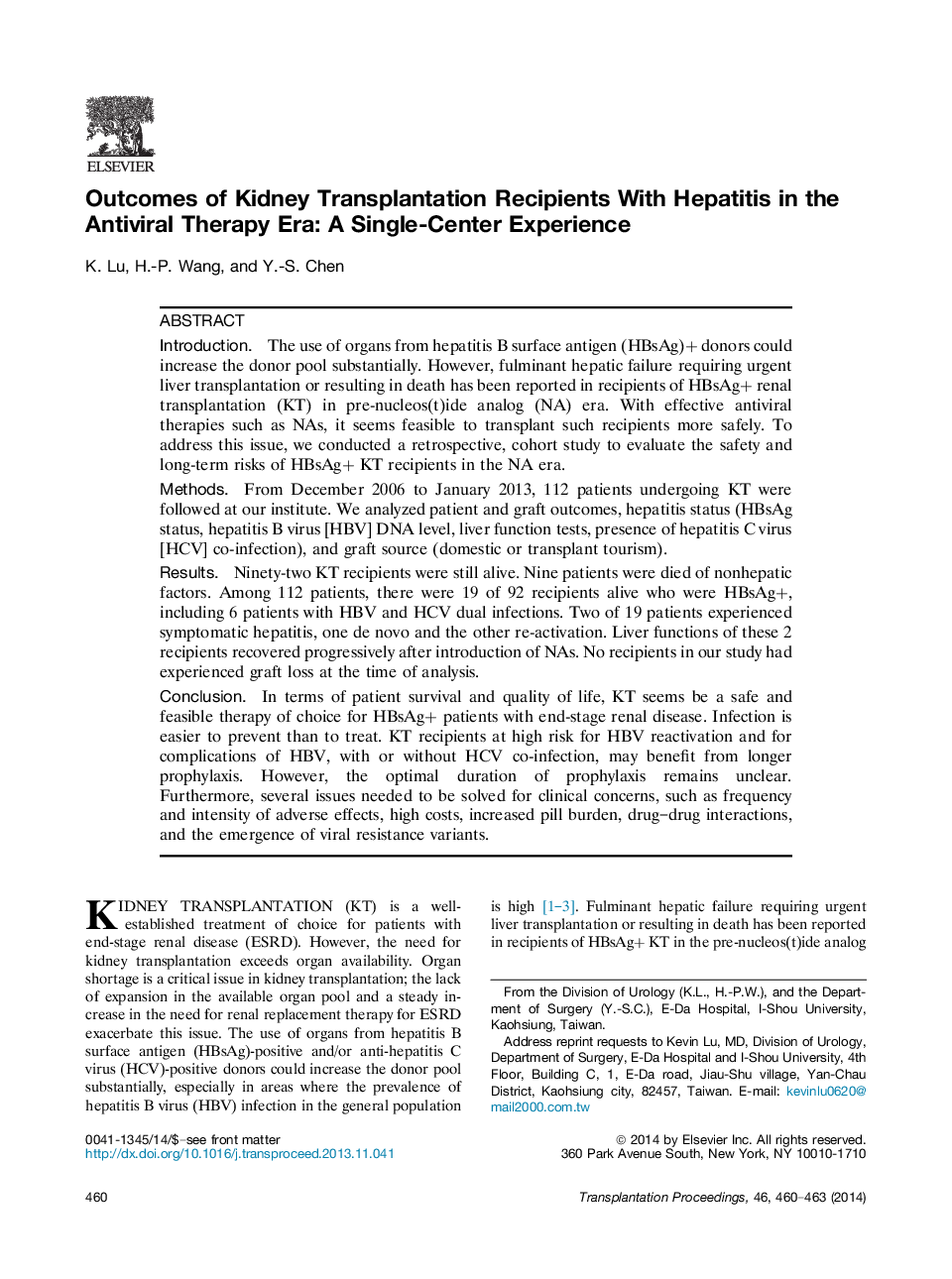| Article ID | Journal | Published Year | Pages | File Type |
|---|---|---|---|---|
| 4258759 | Transplantation Proceedings | 2014 | 4 Pages |
IntroductionThe use of organs from hepatitis B surface antigen (HBsAg)+ donors could increase the donor pool substantially. However, fulminant hepatic failure requiring urgent liver transplantation or resulting in death has been reported in recipients of HBsAg+ renal transplantation (KT) in pre-nucleos(t)ide analog (NA) era. With effective antiviral therapies such as NAs, it seems feasible to transplant such recipients more safely. To address this issue, we conducted a retrospective, cohort study to evaluate the safety and long-term risks of HBsAg+ KT recipients in the NA era.MethodsFrom December 2006 to January 2013, 112 patients undergoing KT were followed at our institute. We analyzed patient and graft outcomes, hepatitis status (HBsAg status, hepatitis B virus [HBV] DNA level, liver function tests, presence of hepatitis C virus [HCV] co-infection), and graft source (domestic or transplant tourism).ResultsNinety-two KT recipients were still alive. Nine patients were died of nonhepatic factors. Among 112 patients, there were 19 of 92 recipients alive who were HBsAg+, including 6 patients with HBV and HCV dual infections. Two of 19 patients experienced symptomatic hepatitis, one de novo and the other re-activation. Liver functions of these 2 recipients recovered progressively after introduction of NAs. No recipients in our study had experienced graft loss at the time of analysis.ConclusionIn terms of patient survival and quality of life, KT seems be a safe and feasible therapy of choice for HBsAg+ patients with end-stage renal disease. Infection is easier to prevent than to treat. KT recipients at high risk for HBV reactivation and for complications of HBV, with or without HCV co-infection, may benefit from longer prophylaxis. However, the optimal duration of prophylaxis remains unclear. Furthermore, several issues needed to be solved for clinical concerns, such as frequency and intensity of adverse effects, high costs, increased pill burden, drug–drug interactions, and the emergence of viral resistance variants.
